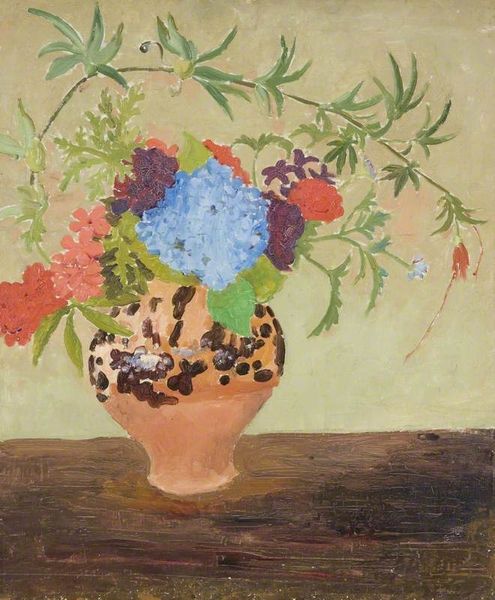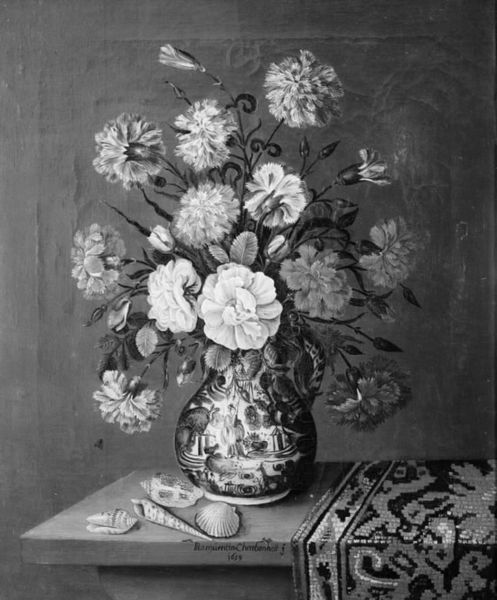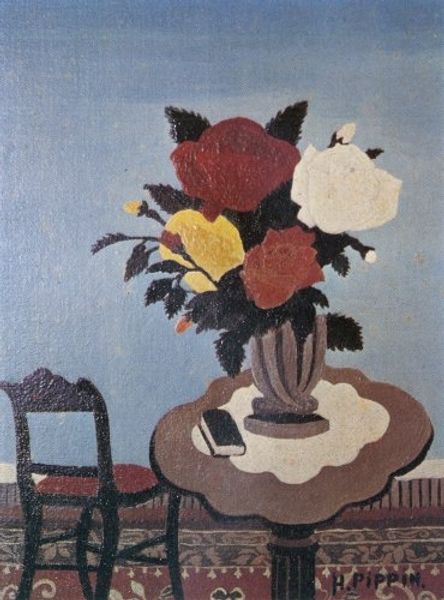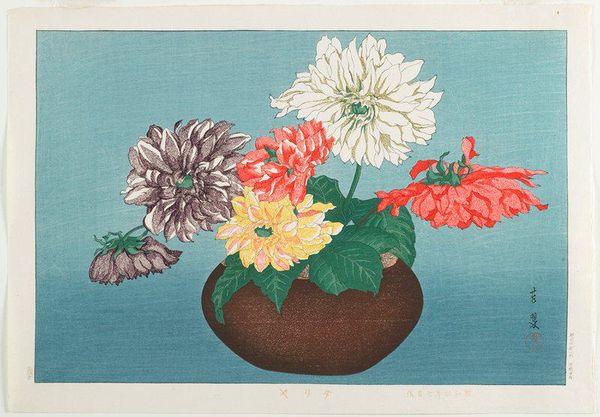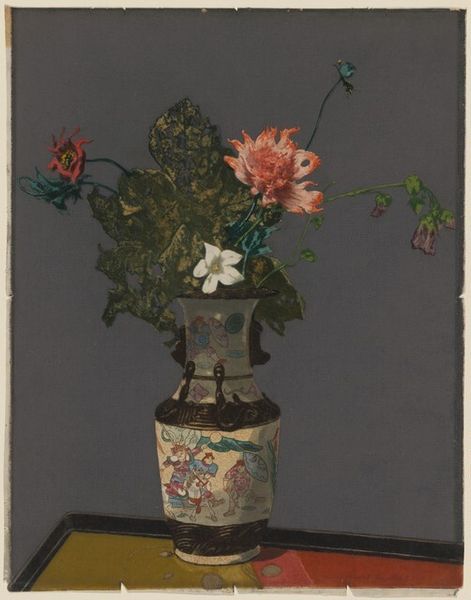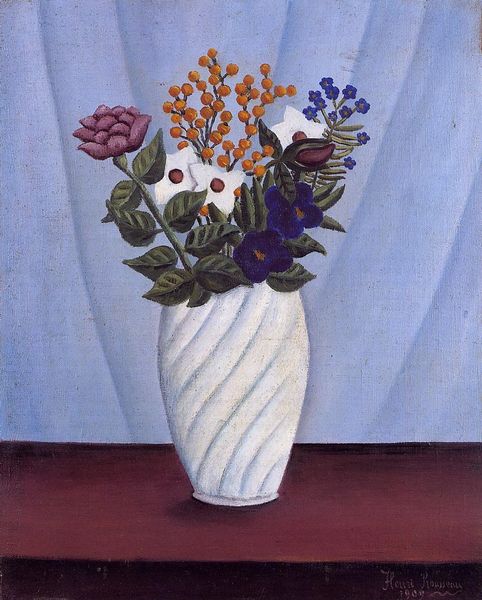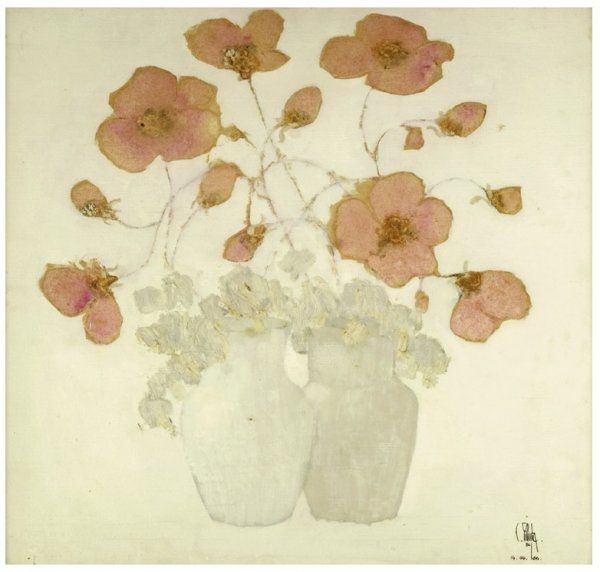
painting, oil-paint, watercolor
#
still-life
#
painting
#
oil-paint
#
flower
#
oil painting
#
watercolor
#
underpainting
#
plant
#
painting painterly
#
watercolor
#
realism
Copyright: Adolf Dietrich,Fair Use
Editor: So, this is Adolf Dietrich’s “Schlüsselblumen,” painted in 1953, oil on… well, I’m not entirely sure. It's quite delicate. What strikes me is how carefully each detail is rendered, but also…how the materials influence the final appearance, giving it almost a folksy quality. What do you see in it? Curator: Immediately, I’m drawn to the process. Notice the flatness, the lack of traditional perspective. This wasn't painted with academic methods. This isn’t about illusion; it's about labor. The painstaking detail suggests a deep engagement with the making of the image. Think about the social context too. Outsider art often arises from self-taught methods and limited access to materials, creating something truly unique in its materiality. Editor: Interesting. The "outsider" aspect gives the artist the freedom of expression because they might feel that they are not being watched as carefully? It's also pretty interesting the medium constraints push the boundaries to become a particular recognizable style or type of making. Curator: Exactly! How might his social standing or resources affect his access to the oil paints he's using here? And beyond the paints themselves, think of the canvas preparation, the brushes, the easel or lack thereof! It is this precise material circumstances and social positioning that informs the style, wouldn’t you agree? Editor: I do, particularly with folk art. Looking at it from a materialist view helps break down traditional ideas about fine art versus craft, too. Seeing the making instead of just the image gives the art an additional significance and new ideas emerge. Curator: Precisely. It allows us to understand how value is assigned to art and how those values relate to the means of production and even, perhaps, challenge its very foundations.
Comments
No comments
Be the first to comment and join the conversation on the ultimate creative platform.


